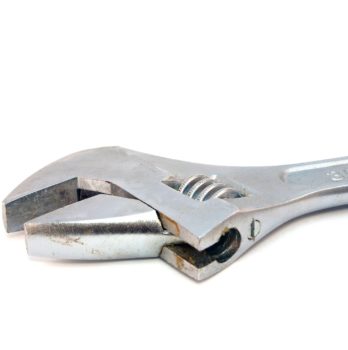The Brand Safety Fix Has to Start with Brands Themselves: Q&A with Jeff Finn, zvelo
by Lindsay Rowntree on 20th Apr 2017 in News

Much conversation over recent months has centred around brand safety, or lack thereof. How does the industry tackle brand safety and is it technically a 'fixable' issue? ExchangeWire speak with Jeff Finn (pictured below), CEO, zvelo, about how brand safety should be addressed and why brands accepting that brand safety comes at a cost is the starting point the industry needs.
ExchangeWire: The talk of the town is that ‘we must fix brand safety’ – how do we go about fixing it and what technical barriers exist?
Jeff Finn: Brand safety – or, rather, the failure to address brand safety – has come up many times over the last several years. It’s now front and centre due to a combination of factors that will hopefully drive the industry to finally take a comprehensive approach to the challenge. Unlike ad fraud, which is hidden from public view, brand safety is highly visible. Placing a brand’s ad next to the wrong or inappropriate content gets immediately noticed and is also exacerbated with the reach of social media – a bad brand experience can go viral in minutes. Brand safety has finally reached a tipping point that the industry can no longer ignore.
The fix to brand safety has to start with the brands themselves. No one other than the brand in the ad tech landscape is truly motivated to address brand safety, because doing so will result in reduced inventory, commissions, and fees by others. Brands must demand and enforce that brand safety be implemented platform-wide across the ad tech ecosystem, from the buy side to the sell side.
That said, a comprehensive brand safety approach is not free and is also associated with considerable technical, people, and process challenges. More ads are being targeted at highly dynamic websites, blogging, news, and social media channels – places where content is not moderated. These types of advertising environments, which continually change (and can go from innocuous to virulent content in seconds), require a solution that performs real-time brand-safety detection and categorisation at a massive scale across dozens of languages for text, images, videos, slang, and more. Additionally, buy-side and sell-side platforms need to be able to ingest these massive raw data feeds to eliminate latency and meet the millisecond response times required for programmatic transactions. Also, fundamental changes to workflows and financial incentives for the buyers and sellers of online digital advertising will need to be implemented. These kinds of investments in the technology, the data, and the changes to behaviour and workflow will only take place when brands force the issue.
Is the brand safety issue technically ‘fixable’?
Technical solutions to brand safety that are available today can fix most of the issues, though no silver bullet exists that can fix every brand safety issue at this time. The amount of content added to and updated on the web (blogs, social media, video channels, and elsewhere) is being done at such a large scale that being able to detect and categorise each new bit of content would be cost prohibitive. That said, solutions exist today that can detect and protect against the vast majority of such content. When brands collaborate with their ad tech partners, they can focus tech and data on the inventory they are most interested in, and, thus, reduce the scale (and cost) of the technical challenge.
Why are brand safety tools not switched on as a default in programmatic campaigns, or at least flagged as a reminder to be set up during campaign execution?
Brand safety should be implemented platform-wide and 'switched on' for each and every campaign. But before this will actually happen, brands need to make brand safety a standard business requirement and acknowledge that there is a cost associated with it.

Jeff Finn, CEO, zvelo
While brands believe that the ad tech ecosystem 'should' have brand safety implemented today, the reality is that they don’t – and, up to this point, there has been no consequence for not having brand safety measures in place. Yes, there are technical challenges, but this is not inherently a technical issue. Rather, it’s more an issue of human nature. People who fill the ranks of ad tech companies are motivated by making the most money they possibly can. Since implementing brand safety is associated with reduced revenue and adding to operating costs, very few, if any, companies will act on their own – particularly if taking action could ultimately make them less competitive. In today’s brand safety world, no one loses other than the brands. With brand safety, no one wins other than the brands. So, it is up to brands to start the long-overdue revolution.
Many advertisers and agencies are now talking about whitelisting being the only solution to brand safety – is this the answer?
No, whitelisting is not the answer – or should it even be considered as part of the solution. The people who suggest whitelisting are looking for an easy-out with a low-cost and low-pain way to address brand safety and are only paying lip service to a more complex issue. They desperately cling on to hope that brand safety issues will soon fade from recent memories and never return.
Whitelisting is advocated by people who are unwilling to make the necessary investments in the tech, data, workflows, and people needed to implement a comprehensive brand-safety solution platform wide. For those who support whitelisting, greed is a greater motivator than fear at this moment in time, and they are taking the chance that the ad tech world can weather the current storm and return to business as usual. Most of all, they are gambling on there being few, if any, consequences when they choose a cheap and easy solution.
The ‘brand safety’ blame has been passed along the chain to each and every stakeholder in the programmatic ecosystem – who’s really responsible for ensuring brand safety? Should the buck stop with the advertisers, as they hold the purse strings?
Yes, the buck should stop with the advertisers. Although brands aren’t positioned to implement the necessary tech and data associated with adequate brand safety measures, they absolutely control the purse strings. And only when they use the power of the purse will behaviours across the ad tech ecosystem be incentivised to evolve. In order to change the tide, CMOs will need to see the risk associated with not venturing from the status quo and the CEOs of the brands should fully understand the risks to their brand image and be motivated to seek action.
How do we move on from this and increase the levels of trust and transparency across the value chain?
Brands and their CMOs, using the power of their budgets, need to demand that their suppliers implement brand safety on a comprehensive, platform-wide brand basis. They should insist on the availability of tools, reports, and dashboards that provide visibility to the performance of their campaigns, and that they are able to ensure they receive what they believe they are paying for. Brands need to trained in how to use those tools and then make sure that they actually use them. Also, comprehensive page-level reporting is available today and provides absolute clarity on the quality and brand safety of the inventory that is actually being purchased.








Follow ExchangeWire